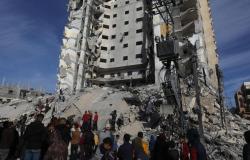One of the six almost miraculous Russian weapons that Russian President Vladimir Putin announced to the world a few years ago is the 3M22 Zircon hypersonic anti-ship and anti-surface missile. It is definitely to be deployed in service on one of the Russian frigates, but it was probably managed to detonate it from some ground platform as well. In addition, there have been reports that at least some of the missiles were defused, but there is so much confusion surrounding this that it is almost impossible to get the truth.
The projectile becomes invisible at its speed
One of the reasons why Russia developed hypersonic weapons is the effort to escape the air defense of Western countries, especially the USA. ThePrint reports that Russia specifically considers the 3M22 Zircon missile unfireable and has already announced its deployment. Only about her is known a minimum of information, moreover, many of them may be misinformation and untruths. For example, MilIn ptoom states that at least two fired Zircon missiles have already been shot down by anti-aircraft defense, but it is not clear how. The most likely hit is a counter-missile from the MIM-104 Patriot.
There are several reasons why the Zircon projectile is referred to as unshootable. The first is speed, MissileDefenseAdvocacy notes Putin’s claim that it has reached Mach 9, meaning that there is only a short time to capture her. Moreover, at such a high speed, plasma is created around the missile, which causes the effect of invisibility, because it interferes with radar signals, and it is therefore difficult to direct a counter-missile to such a missile. It is also possible that it can change the direction of flight.
The big problem is projectile guidance
The stated range of the Zircon missile is 1,000 km, but this only applies when it is flying on a semi-ballistic trajectory. In the case of low-altitude flight over sea and land, it is probably much shorter. Wikipedia states that it has a warhead weighing 300 to 400 kg, and it can probably also carry a nuclear warhead, although only its kinetic energy is destructive to the target. According to Russia, the Admiral Gorshkov frigate is equipped with the missiles, and other ships and submarines will carry them in the future.
Zircon may also be a Russian disinformation game, as the Russian Navy has never publicly deployed it, even in exercises against ship targets. It is therefore not clear whether the problem with guidance on moving ships has been solved, which is a problem due to heating and the aforementioned plasma. In the case of an attack on a ground target, it is much easier, because you can rely on satellite guidance, for example. But since not much information surrounding 3M22 Zircon is classified, the true state of affairs will probably be known for several years.






